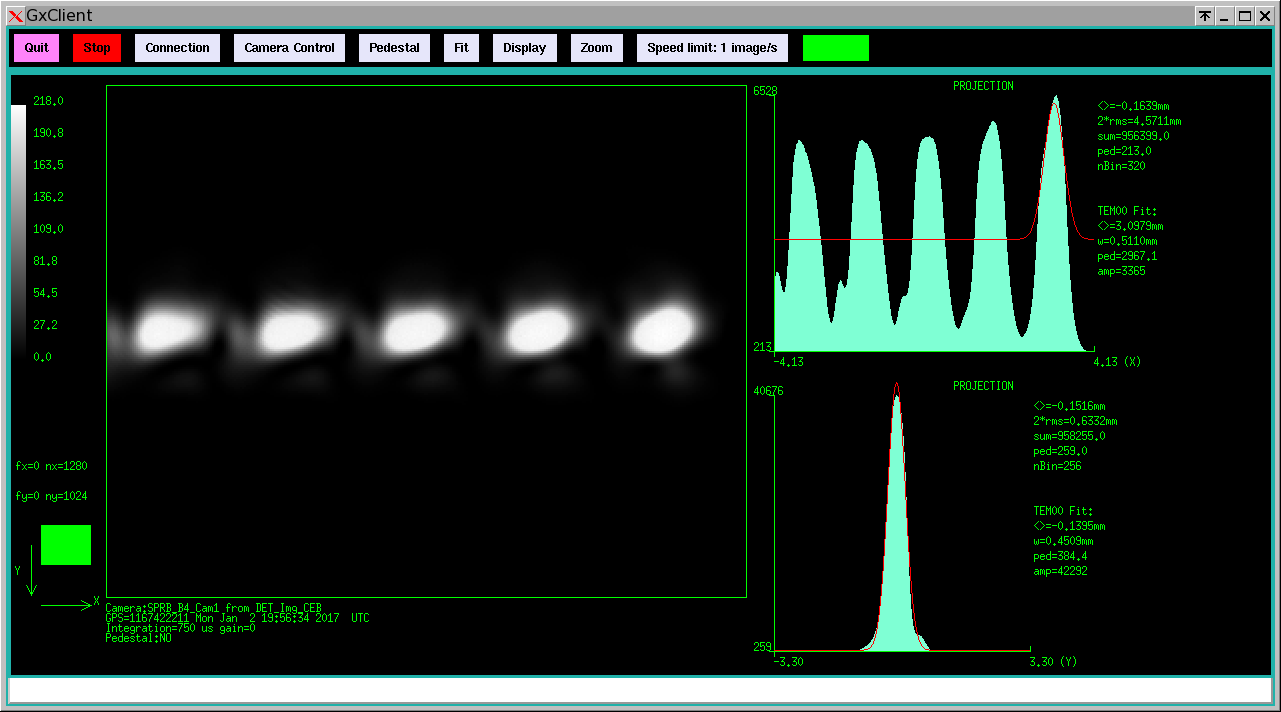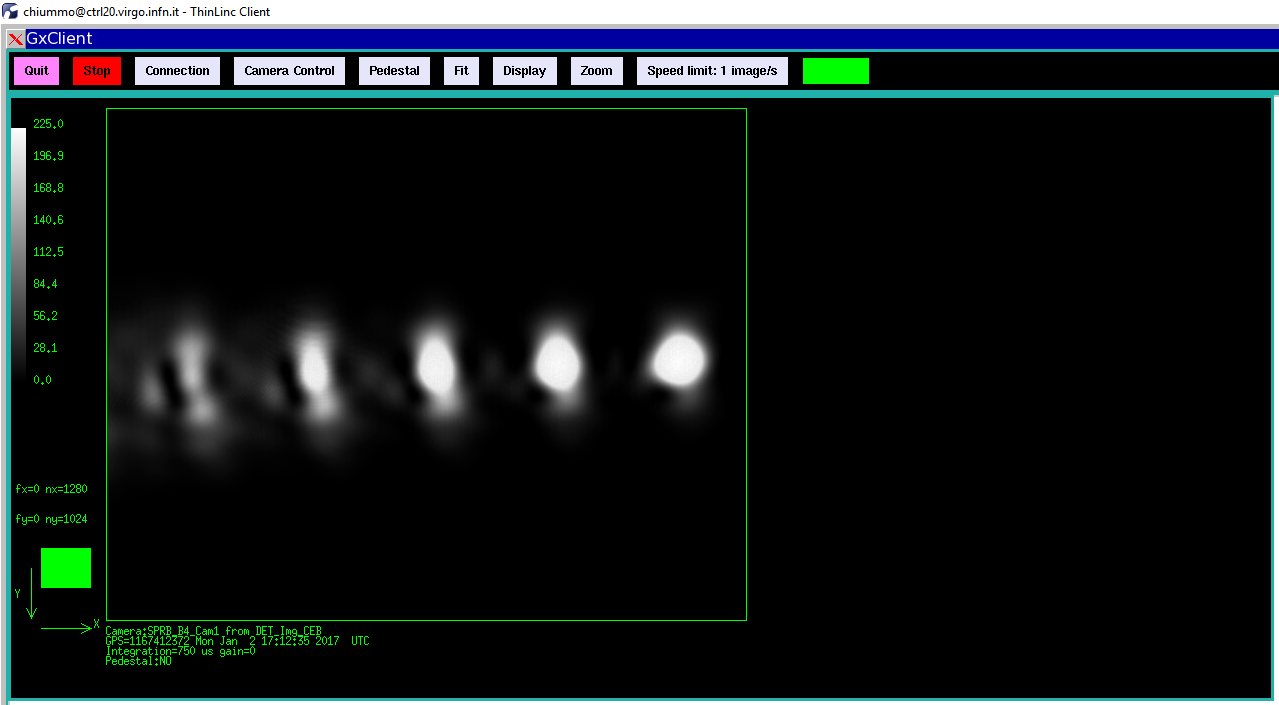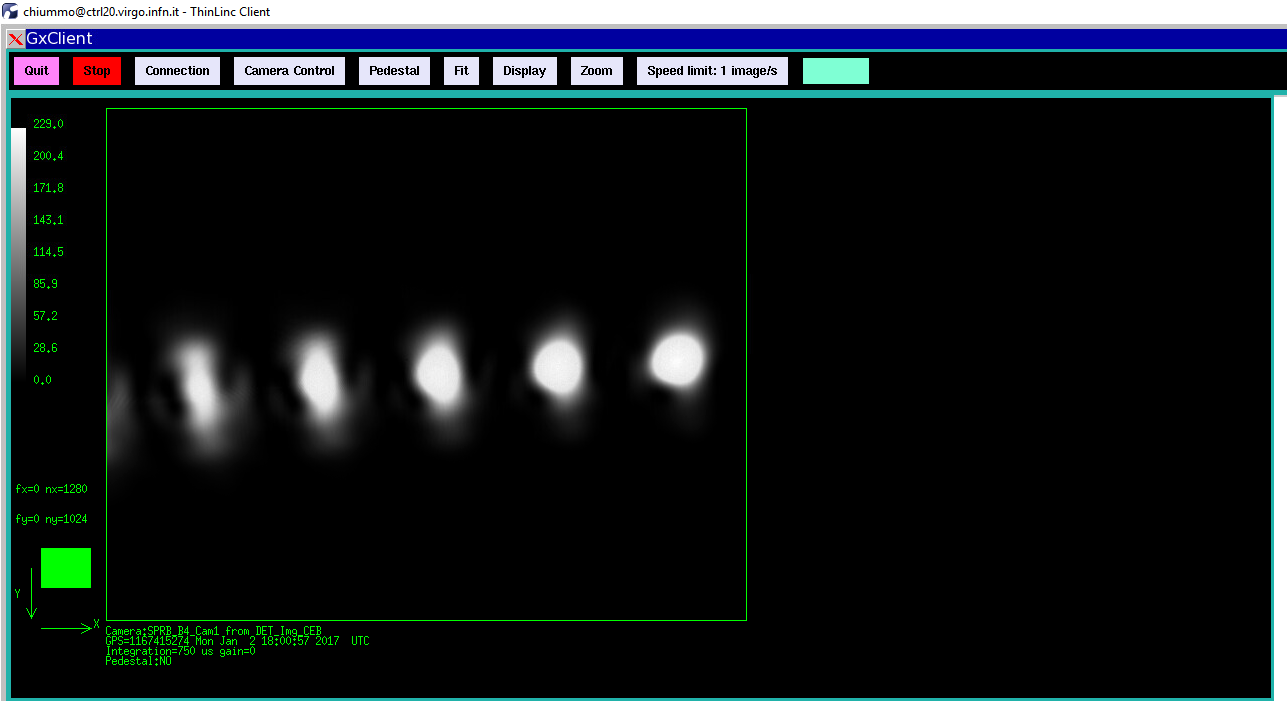Today, we came up with another kind of measurement for further studying the TCS central heating.
Here are some qualitative results:
- Increasing the central heating (approximately a 140 mW on each compensation plate) seems to introduce higher order modes (mainly even-number modes) into the system.
- As the CO2 powers are increased, the interferometer beam size appears to shrink as it bounces multiple times in the power recycling cavity.
We will probably need a couple of days to quantitatively examine the results.
[The experimental configuration]
The idea is to monitor the evolution of the beam size after the beam bounces multiple times in the power recycling cavity without letting them interfering too much. This was done by locking the Michelson at a dark fringe with the B1p 119 MHz signal and slightly misaligning the PR mirror. The end mirrors were misaligned. In this configuration, we were able to see a number of beam spots on the B4 camera due to the beam making multiple round trips. Looking at the B5 camera, the beam didn't look great and therefore we decided not to use this camera. Also, the B1p camera showed a couple of beam spots, but we didn't try to make it look better as we were afraid of losing the locking signal for the Michelson.
To get a better view on the B4 camera, we steered the POP plate from -60 urad to something like -25 urad. This in the end allowed us to accommodate five beam spots in the B4 camera including the primary beam and those up to the fourth-bounce beam. In a highly-idealized situation, one would expect that the beam size remains the same regardless of how many times it bounces in the power recycling cavity.
[The test]
While holding the Michelson locked at the dark fringe, we started changing the CO2 set points to see what kind of effect we would see in the beam shapes in the multiply-bouncing beams. The below is a record of what we did.
- 16:36 UTC, the Michelson locked. No CO2s applied.
- 16:41 UTC, a 140 mW CO2 is applied on each compensation plate.
- 17:18 UTC, the NI CO2 decreased by 40 (-ish) mW to improve the contrast defect.
- 17:49 UTC, the NI CO2 further decreased by another 40 (-ish) mW to furthre improve the contrast defect.
- 18:27 UTC, both CO2s switched off
[Some B4 camera images]
From the camera images, we were already able to learn qualitative behavior of the power recycling cavity beam. The below show screenshots of the B4 camera during the test. The rightmost beam is the primary beam, and next is the second and those up to the fifth bounce beams from the right to left. When the interferometer is in the cold state where no CO2 were applied, the beam size seems to slightly increases as it experiences a round trip. In contrast, when the CO2 is applied, the beam size seems to decrease as it bounces in the power recycling cavity.
In addition, a high CO2 central heating makes the beam shapes far from a Gaussian. Looking at the shape of the fifth beam (the leftmost beam in the camera), we can tell that the beam shape appears more like a Laguerre mode. This suggests that the CO2 central heating introduces even-number higher order modes. This may mean that the CO2s are well aligned with respect to the main interferometer beam. We don't know why the CO2s introduce the higher order modes at this point.
Also, improving the contrast defect doesn't really change the situation -- the fifth beam still doesn't look like a Gaussian, see fig.3.
Fig.1: Cold state
Fig.2: With a 140 mW CO2 projected on each compensation plate.
Fig.3: when contrast defect was improved.
[Discussions]
Since the application of the central heating introduces even-number higher order modes, this is likely the reason why CITF had been locked on a Laguerre mode in the past when a high central heating was applied (35867). Remember that the finesse of CITF for the carrier is about 100. This means that the intracavity field needs to bounce several ten times in CITF and therefore one can imagine that the intracavity field is almost left with a very Laguerre-type mode after such large number of circulation. Although, it is unclear at this point how critical this higher-mode scattering is in terms of stable interferometer operation.
Also, if the power recycling cavity has such an intense scattering matrix to scatter the 00 mode into some higher order modes, this may also explain why the cavity build-up kept decreasing as the CO2 powers were increased (35888).
Additionally, if we work out some ABCD matrix analysis, we might be able to find out whether the power recycling cavity is stable or not as a function of the CO2 powers. We will be working on modelings/simulations in order to quantitatively answer these points.





